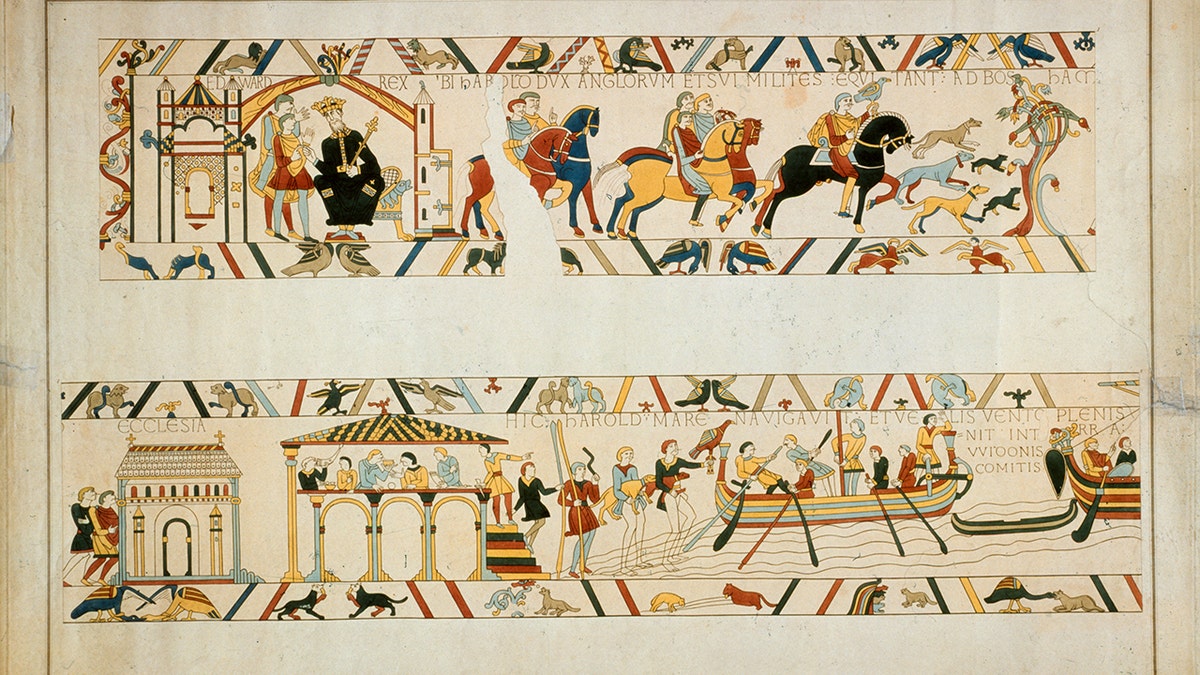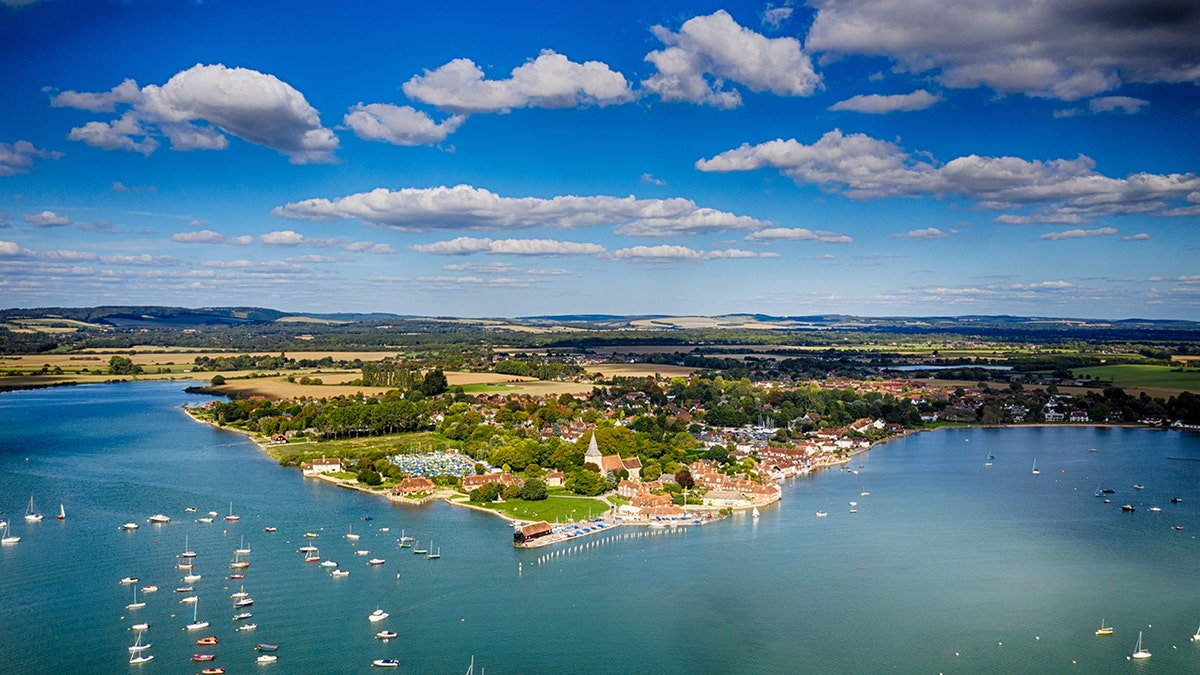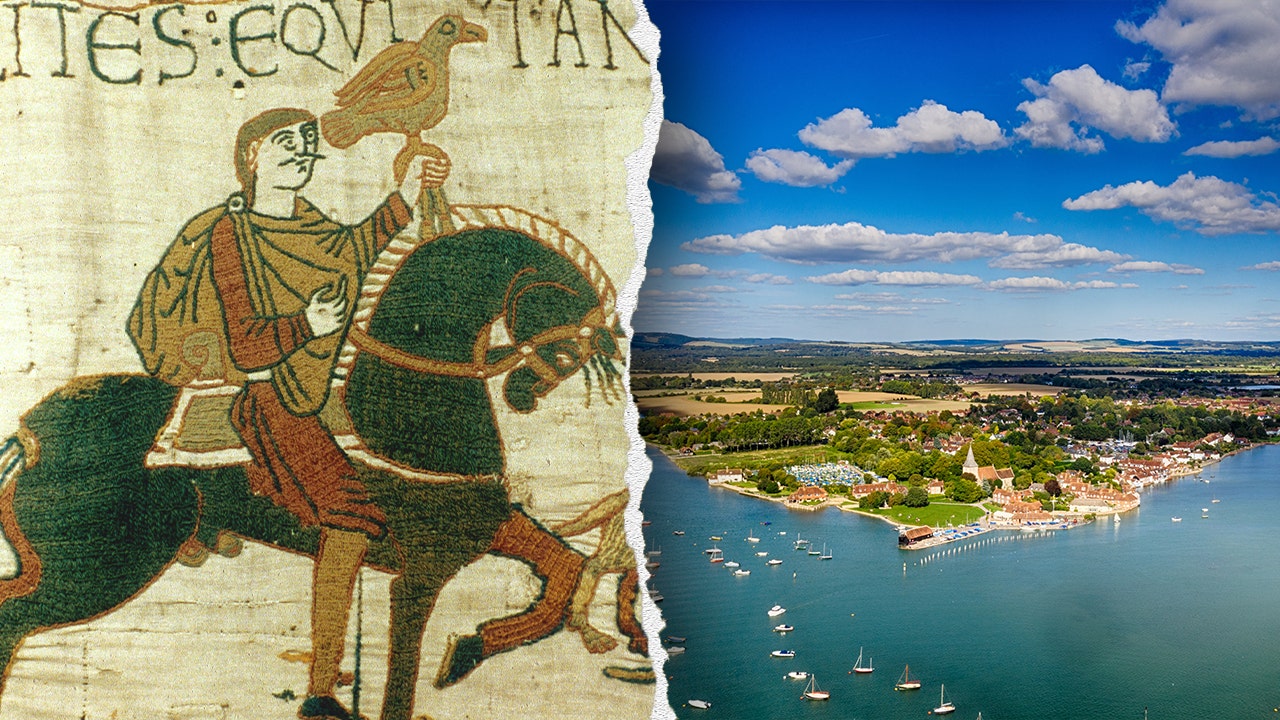Lost site depicted in the iconic Bayeux Tapestry has been found, thanks to the revelation of an ancient loo.
Recently, Newcastle University made an extraordinary announcement regarding the discovery of Harold Godwinson’s, or King Harold II’s, residence in Bosham, a charming village located on the picturesque coast of West Sussex, England. This location, filled with historical significance, is home to remnants of a notable past, now highlighted by an unlikely hero: an 11th-century toilet.
Harold, the last Anglo-Saxon king of England and pivotal figure in the famed Bayeux Tapestry, met his tragic fate during the Battle of Hastings in 1066. His residence, previously depicted twice in the tapestry, had long remained a mystery until this new archaeological insight. The tapestry illustrates Bosham as a power center, featuring lavish feasts before Harold set sail for France, a detail that now resonates with fresh significance as history is revisited.
In the tapestry, Harold is portrayed feasting in an extravagant hall, a detail that offers a glimpse into the life he once led. As Newcastle University researchers sift through maps and archaeological records, they have painstakingly pieced together the fragments of Harold’s Bosham residence. They surmise the remains uncovered could very well belong to the opulent hall imagined in the tapestry. A nearby private home has stirred speculation; some believe this could sit atop the ancient site.

Geophysical surveys and previous excavations have unveiled a remarkable latrine within a substantial timber structure. This feature, often associated with high-status living conditions, evokes images of elite gatherings and the daily lives of those who wielded power. Researchers from Newcastle University elaborated on this trend, noting that since the 10th century AD, elite homes in England began to incorporate toilets—marking a shift in societal norms around privacy and sanitation.
The latrine within the timber building serves as a poignant symbol of Harold’s status and offers a tangible link to a past filled with authority and grandeur. In the words of Dr. Duncan Wright, one of the researchers involved, this site holds the essence of an Anglo-Saxon en-suite, affirming its affiliation with a residence of remarkable importance predating the Norman Conquest.

As the team continues to excavate, Oliver Creighton from the University of Exeter emphasizes the significance of this site. He expresses a sense of excitement about this “Anglo-Saxon show-home,” showcasing a moment in time when England’s social fabric was being irrevocably altered. As these discoveries come to light, they form a bridge to a historical narrative, inviting a deeper appreciation for a past that continues to influence the present.

Such findings remind us that history is often buried just beneath our feet, waiting for the right moment—or perhaps the right flush. Interestingly, recent excavations have turned up a trove of 1,000-year-old coins, minted between 1036 and 1044, hinting at a thriving culture that once pulsed through these lands. It’s a testament not only to the resilience of history but also to the relentless pursuit of understanding our shared past.




































